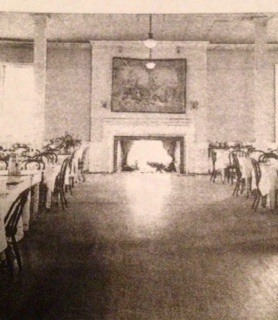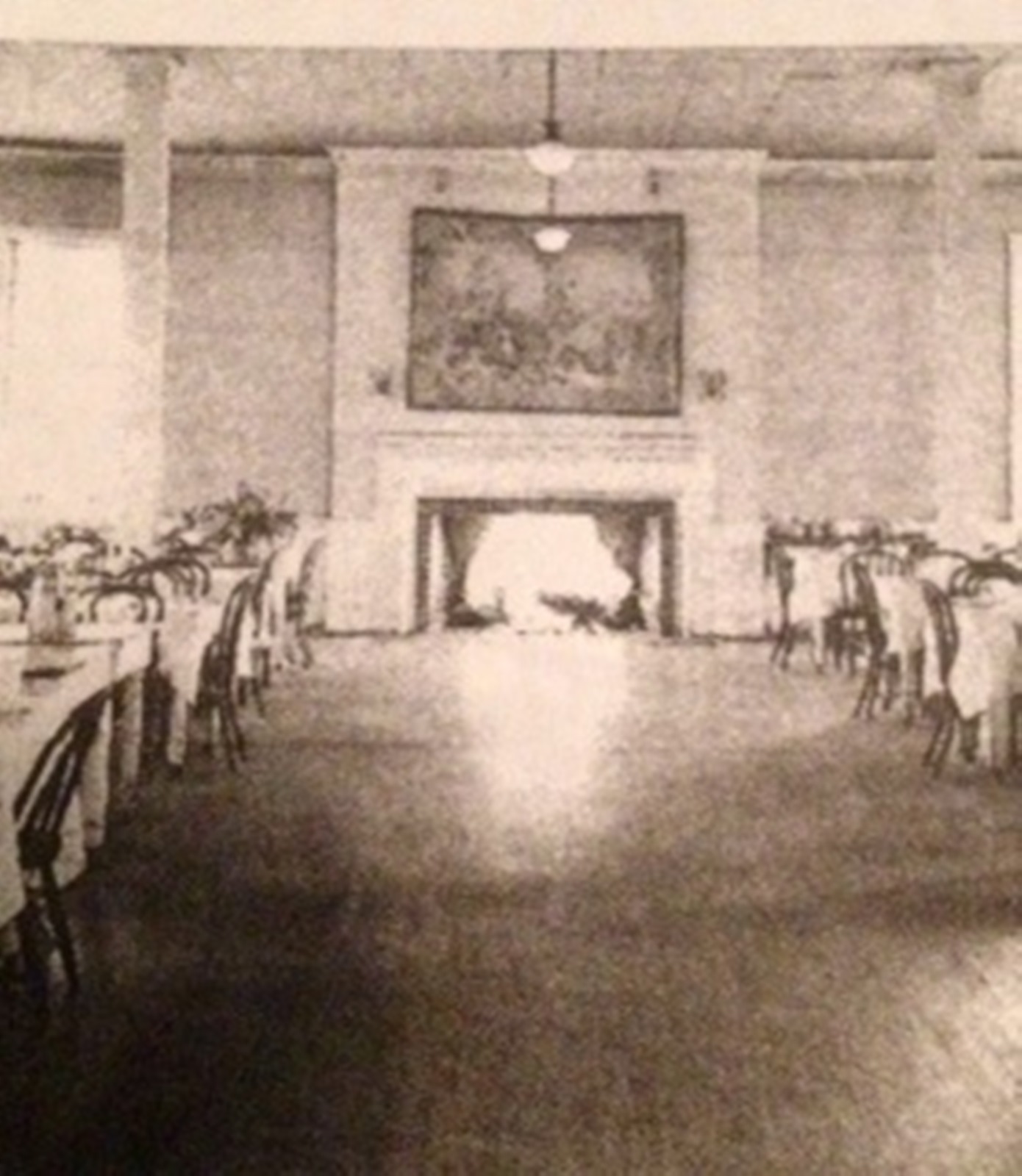From chicken loaf to gourmet pizza: A history of MC

Photo Courtesy of Maryville College Archives
At noon, Pearson’s dining hall is packed. Students mill about, engaging in conversation, before settling down with their plates to enjoy lunch with fellow classmates. The joyful scene of communal eating has not changed much in the last 100 years at Maryville College. Students and faculty have long enjoyed sharing meals together. However, the food and services have changed dramatically over the years, and perhaps, as today’s students might argue, not so much for the better.
While students today may grumble about bland potatoes and overcooked vegetables, they have at least the luxury of provided meals. At the school’s founding in 1819 until the 1860s, students were responsible for preparing their own meals. They worked on the college’s farm and dairy and pooled their resources to make ends meet.
Beginning in the 1870s, a kitchen in the basement of the all female residence hall, Baldwin Hall, was used to prepare meals. Students were still responsible for purchasing and preparing all of their own food, save the occasional donation from churches. Records show New Providence Church, for instance, contributed corn, pork, bacon, potatoes, wheat and flour.
It was not until the 1890s that the first manager was hired to facilitate dining. An annex was added to Baldwin to include a dining hall, and students paid about $1.75 for three meals a day. This system, called the Cooperative Boarding Club, expanded and moved into what is now Pearson’s Hall in 1910. Most of the food and dairy products were still grown and produced on the college and nearby farms. The health and quality of the food was questionable and eventually aroused considerable distaste among students.
In 1928, the Student Government Association voted to raise tuition in order to bring in a registered dietician to take over the dining. The proposal was initially rejected on the grounds of affordability, but the college could ultimately not ignore the insistent culinary grumbles. In 1934, Margaret Susana Ware was hired as the first resident dietician. Ware would join forces with Agnes Henry, an MC cook of eight years and dedicated back-of-house manager, to form an efficient team. They ushered in a new era of dining for MC that would endure for nearly half a century.
Ware insisted upon formal, family-style meals, complete with proper place settings, flowers and music, even in the midst of the tight-budget years of the Great Depression. As the food was concerned, Ware insisted that she could “not stand to cook,” but nonetheless had a faithful cooking staff, including Henry, who carried out her attempts to cater to the diversified tastes of the students. She revamped southern classics, like okra and grits, by adding shrimp, a delicacy unheard of in rural East Tennessee.
Others, though some were not so well received: “Eggs and brains,” recalled alumnus Gail Hafner ’60 with a cringe, “scrambled eggs and I guess it was cows’ or pigs’ brains. I remember I couldn’t even look at that.”
Chicken loaf and vegetable casserole also presumably turned up a few noses. Alumnus Martha Hess ’67 fondly remembers Ware as a budget-stretching manager who “did her best to make sure the students were well fed.”
Ware was persnickety and a stickler for exactness, including semester-long assigned seats:
“Couples wouldn’t sit next to each other,” Hess said. “Just in case they broke up.”
Ware’s student wait staff was just as dedicated as she to ensuring all meals were served on time. Three times per day, the staff arrived early to set the tables, served the food and stayed late to bus the tables and clean.
Rarely did they get to eat at the regular meal times. They did, however, get one night a week off, and students were made to pack “sack suppers” of a sandwich, fruit, cookie and orange juice at the midday meal.
Hess had a friend who was a waitress. “She hated hamburger night. Those football players would take the tray of French fries and dump it on their plates. She’d have to keep running back to the kitchen to get more,” Hess said.
In 1973, after 40 years of vegetable casserole and chicken loaf, Ware retired along with loyal assistant Henry. Upon the departure of the dynamic dining duo, the college struggled to find replacements. Large food purveyors had taken over most of the collegiate food landscape, leaving the college to outsource its services. All you can eat, buffet-style meals with flexible hours became the norm as students became ever-busier and less inclined to sit down and share a meal with all their peers. A number of companies have since flitted in and out of the MC dining repertoire, including the college’s current provider, Aramark.
Discontent among students with regard to food is nothing new, and continues to penetrate the lunch line today as students grumble about the lumpy mashed potatoes or the bland macaroni and cheese. Hess and Hafner remember complaints, too, though they never had any.
Perhaps then, frustration and the desire to make things better are simply the products of a higher education.
Current dissatisfaction with the college’s food, ironically, has to do with a seeming lack of attention to sustainable and local products, a trend the students of the 19th century Maryville College certainly followed. The school seems to have come full circle.
An empowering sense of community has always been a steadfast convention at Maryville College.
Thankfully, though meals are no longer served family-style, they are certainly shared that way. Any outsider who happens upon Pearson’s at noon will doubtless encounter hundreds of smiling, laughing mouths, eager to break bread, pizza or salad.


I was a waitress during the 1950s (paid fifteen cents a meal); on Sunday evenings we had to prepare soup, salad and dessert. The waitress next to me was, um, less than persnickety in the preparation. During her usual inspection rounds, Miss Ware loudly announced that my neighbor’s sliced tomatoes looked “like bird droppings.” I haven’t been able to appreciate sliced tomatoes in sixty years!
A great history of the dining hall. I too worked there on student help for a year at 17 cents an hour in the late fifties.